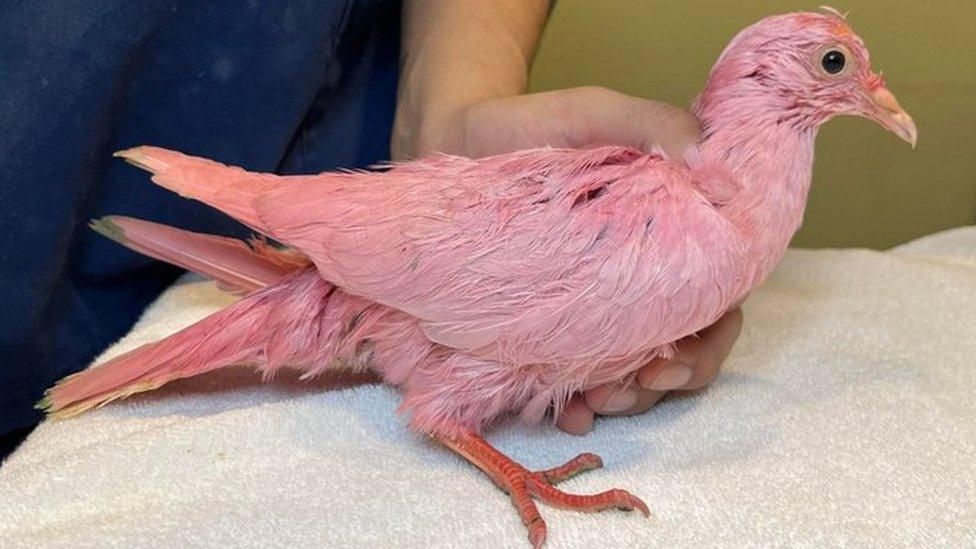Blue pigeon mystifies town's residents
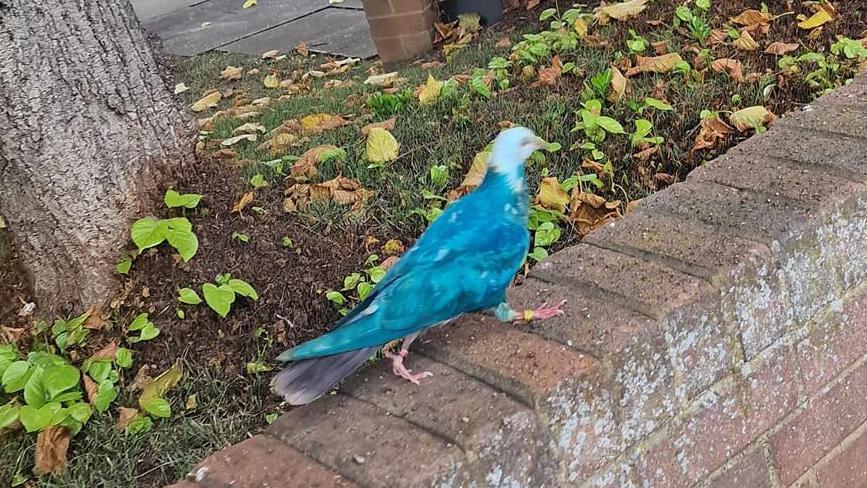
Locals have been left perplexed after seeing the distinctive animal flying around Maidenhead
- Published
Several sightings of a blue pigeon wandering around a town's streets have baffled residents.
The bird has been photographed by a number of people in Maidenhead, Berkshire.
Some locals insisted the bird's unique plumage looked natural.
But wildlife experts suggested it could have been dyed for a gender-reveal party - a tradition where expectant couples learn the sex of their baby using pink or blue items.
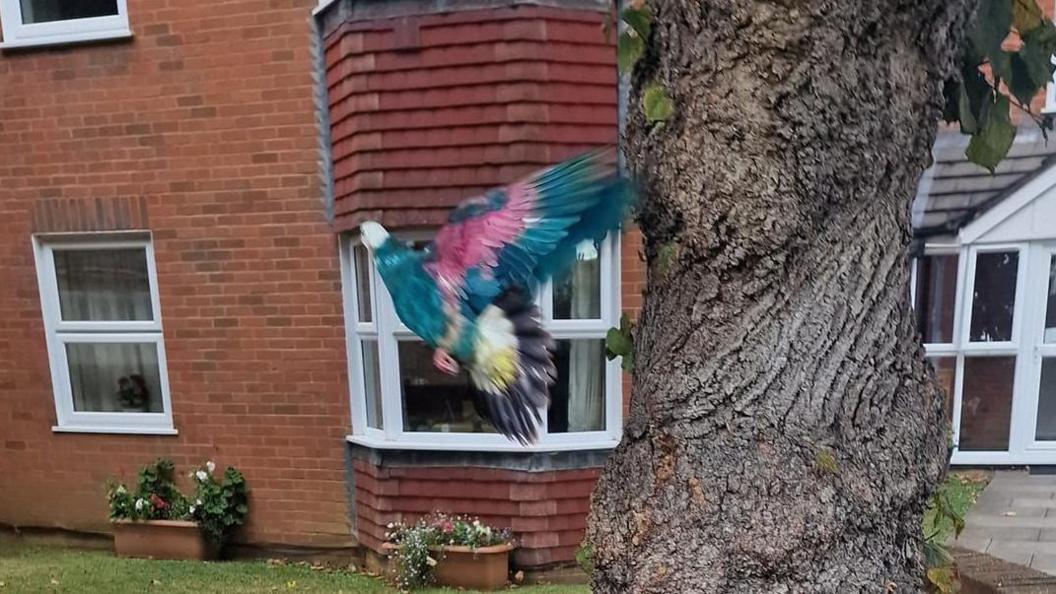
Sanctuaries often warn against dyeing birds, as it could put them at risk from harmful chemicals in the dye and make them more vulnerable to predators
Resident Simon Bryson, who spotted the pigeon on Marlow Road, said he thought it had looked "peculiar".
"It wasn't one colour," the 35-year-old said, adding: "It was like a turquoise-blue on the outside, with pink and yellow under its wings.
He said the bird seemed unharmed and that he had never seen anything like it before.
"Everyone’s saying it looks like it was dyed but it looked too perfect - the colours were intricate like you'd see on a parrot," he said.
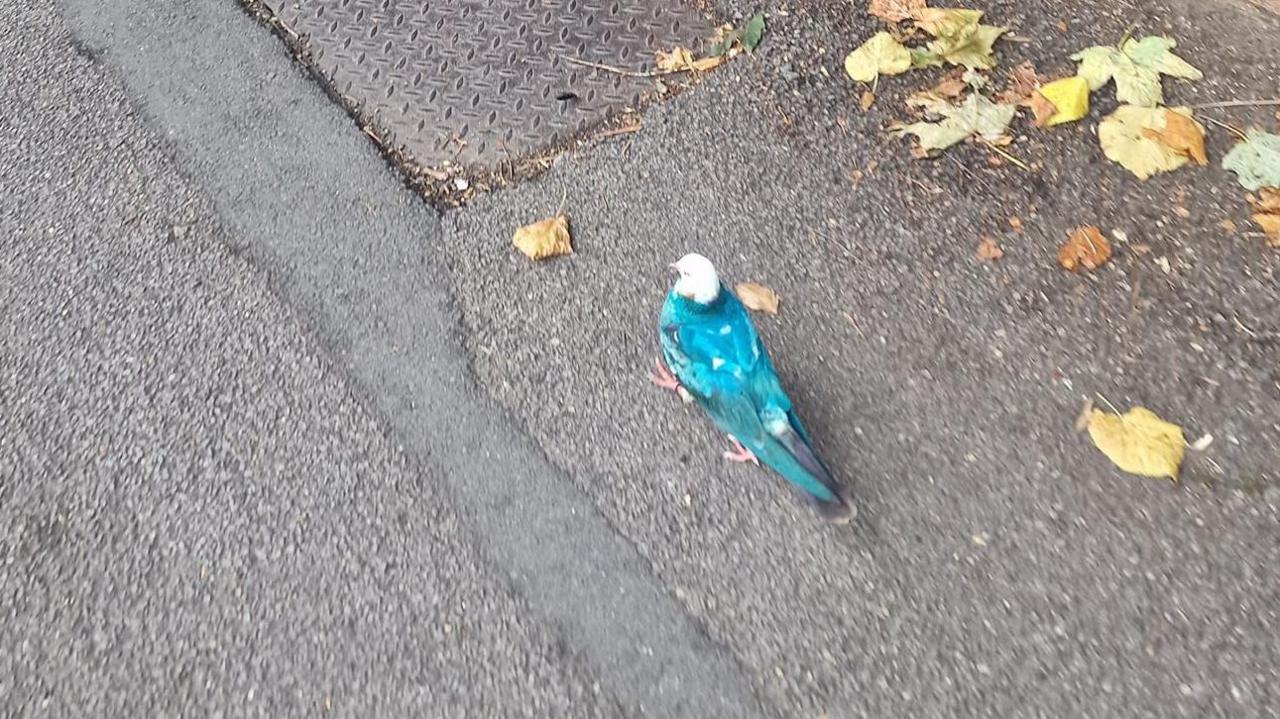
It is unlikely to be a new species or rare variant of pigeon, according to wildlife experts
The animal was also snapped by Kerry Pickett, who saw the bird in her garden in Radcot Close.
"My dad used to race pigeons with my grandad and my uncle, so I've seen a few pigeons over the years and I've never seen one that colour," she said.
The 44-year-old said she had not seen the bird for long before it flew away, but that it had not looked unwell.
"I did think it was unusual but I've seen pigeons of all colours so I didn't think it had been dyed," she said.
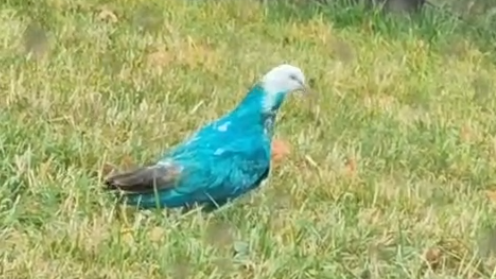
The bird has been seen around Maidenhead multiple times in recent days
A spokesperson from Berkshire, Buckinghamshire and Oxfordshire Wildlife Trust said it was unlikely to be a new species or rare variant of pigeon.
"This is almost certainly someone's escaped bird, or one which has been captured and dyed before being re-released," they said.
Dyeing pigeons is not uncommon, with pink and blue pigeons sometimes featuring in gender-reveal parties, according to the charity.
'Toxic to birds'
Rebecca Machin, from the RSPCA’s wildlife team, warned dye could cause birds health problems, impair their ability to fly and make them more vulnerable to predators.
“Dye and paints can be toxic to birds and other animals, and they would be likely to try to clean any such substance from their coat or feathers which could result in them swallowing it," she said.
She also said she feared social media trends could be fuelling the behaviour.
“We suspect this pigeon’s feathers have been painted - something we seem to be hearing about more and more, including - anecdotally - at events like gender reveal parties," she said.
People who have witnessed an animal being dyed or painted are being urged to visit the RSPCA’s website.
Get in touch
Do you have a story BBC Berkshire should cover?
You can follow BBC Berkshire on Facebook, external, X (Twitter), external, or Instagram, external.
Related topics
- Published5 June 2024
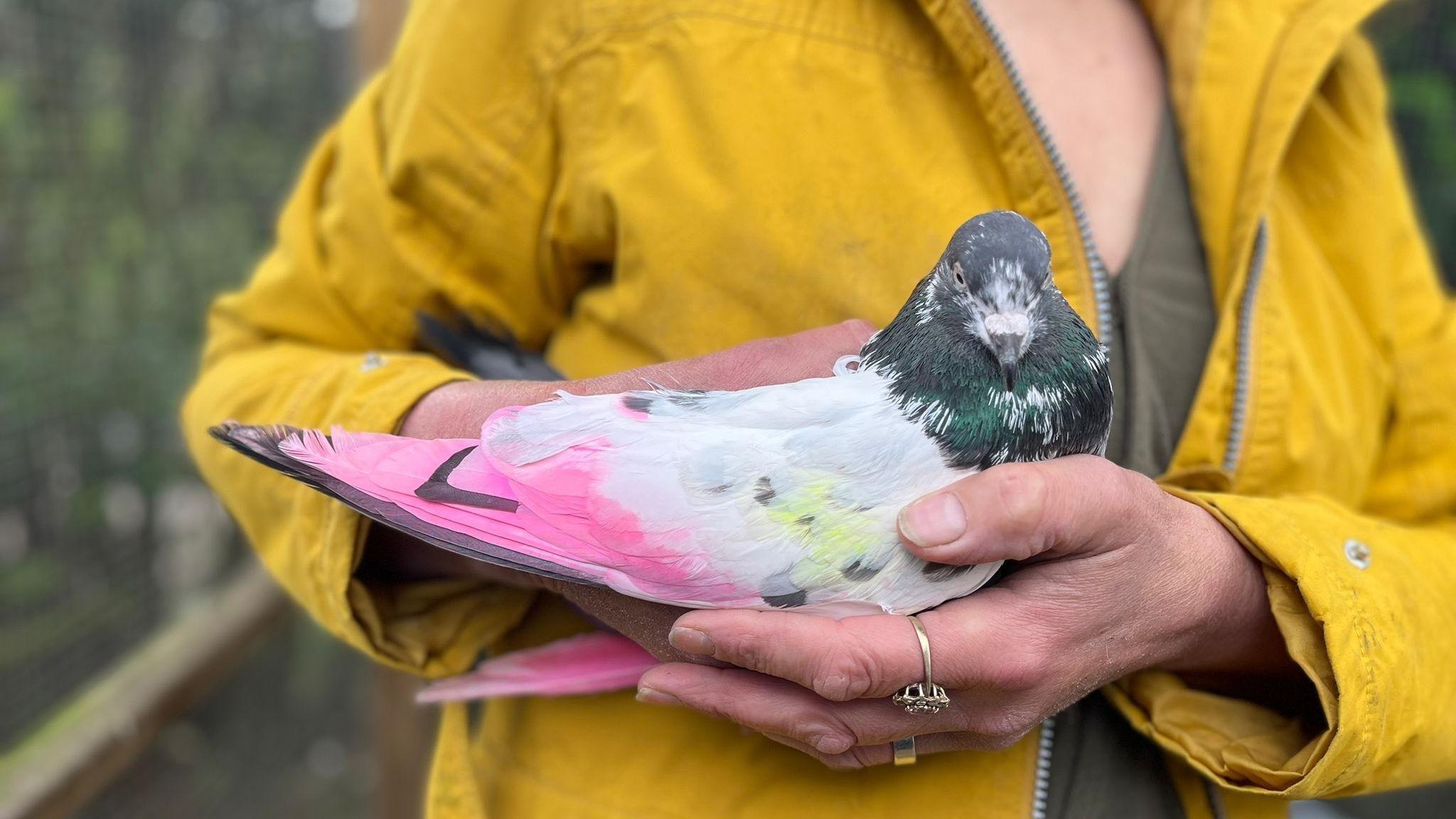
- Published1 February 2023
